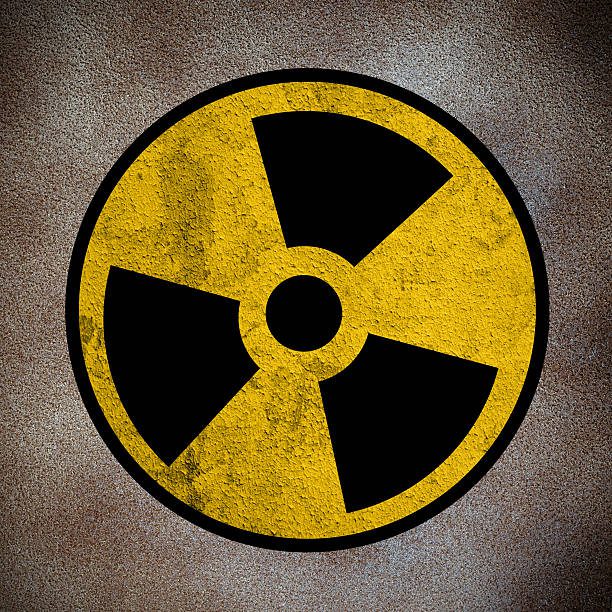What is the symbol for an atom? Some people might say it’s A, others might say it’s 𝛾. But what does that actually mean? And where did the symbol come from in the first place?
In this post, we’ll explore the origins of the atomic symbol and what it represents. We’ll also talk about some of the other common symbols used to represent atoms and molecules. So if you’re curious about atoms and their symbols, read on!
What Is the Symbol of an Atom?
Atoms are the basic units of matter and the defining structure of elements. The term “atom” comes from the Greek word for indivisible because it was once thought that atoms were the smallest things in the universe and could not be divided.
We now know that atoms are made up of smaller particles, but they are still the basic units of matter. The symbol for an atom is usually A, but it can also be represented by 𝛾 (the Greek letter gamma). This symbol represents the nucleus of an atom, which is the central part that contains the protons and neutrons.
- Can I have two Amazon Flex accounts?
- Targeted Author Salman Rushdie Fights False Accusations on Twitter
- Which Mushrooms Bruise Blue?
Where Did It Come From?
The symbol A for atom comes from the first letter of the word “atoms,” which is the Greek word for indivisible. The symbol 𝛾 (gamma) comes from the first letter of the word “gramma,” which means “something written.” This symbol was first used by J.J. Thomson, who discovered the electron, to represent the atom in his equations.
What Does the Symbol Represent?
The symbol A or 𝛾 represents the nucleus of an atom, which is the central part that contains the protons and neutrons. The number of protons in an atom’s nucleus determines what element it is. For example, all atoms with six protons in their nucleus are carbon atoms.
In addition to the symbols A and 𝛾, there are other common symbols used to represent atoms and molecules. The most common of these is H, which represents the hydrogen atom. Other symbols include C (carbon), O (oxygen), N (nitrogen), and P (phosphorus).

Other Symbols Used to Represent Atoms and Molecules
In addition to the symbols A and 𝛾, there are other common symbols used to represent atoms and molecules. The most common of these is H, which represents the hydrogen atom. Other symbols include C (carbon), O (oxygen), N (nitrogen), and P (phosphorus). These symbols are often used in equations and formulas to represent the atoms and molecules involved in a chemical reaction.
The symbol H is used for the hydrogen atom because it is the simplest atom, with only one proton in its nucleus. The symbols C, O, N, and P are used for carbon, oxygen, nitrogen, and phosphorus because these elements are common in both living things and the world around us.
The use of symbols to represent atoms and molecules is important because it allows us to write equations and formulas that are easy to understand and visualize. This is essential for chemists, who use these equations and formulas to study the behavior of matter.
Why Are These Symbols Important?
The use of symbols to represent atoms and molecules is important because it allows us to write equations and formulas that are easy to understand and visualize. This is essential for chemists, who use these equations and formulas to study the behavior of matter.
For example, the symbol H2O represents the molecule water, which is made up of two hydrogen atoms and one oxygen atom. The equation H2O + CO2 -> H2CO3 represents the chemical reaction between water and carbon dioxide to form carbonic acid.
These symbols are also important for other scientists, such as physicists and engineers, who use them to develop models and understand the behavior of matter. Without these symbols, it would be much more difficult to communicate ideas about atoms and molecules.
How Do Scientists Use Them to Study Atoms and Molecules?
Scientists use the symbols A and 𝛾 to study atoms and molecules in several ways.
- First, they use them to write equations and formulas that describe the behavior of matter.
- Second, they use them to develop models of atoms and molecules.
- Finally, they use them to communicate their ideas about atoms and molecules to other scientists.
The symbols A and 𝛾 are essential for scientists who study atoms and molecules. Without these symbols, it would be much more difficult to understand the behavior of matter.
Closing Thoughts on the Importance of Atomic Symbols
Atomic symbols are important because they allow us to write equations and formulas that are easy to understand and visualize. This is essential for chemists, who use these equations and formulas to study the behavior of matter.
The symbols A and 𝛾 are also important for other scientists, such as physicists and engineers, who use them to develop models and understand the behavior of matter. Without these symbols, it would be much more difficult to communicate ideas about atoms and molecules.
- When Does “Complication” Mean?
- Why Does My PS4 Sound Like a Jet Engine?
- Are Carhartt Duck Bibs Waterproof?
- Can You See Who Reported You on TikTok?
- What Does Phage Mean? An In-Depth Look at These Remarkable Viruses
- Can Spironolactone Cause Weight Gain?
- How To Turn Off Ford F150 Traction Control?
- Can Caulk Be Painted?
- How To Unlock A Ford F250 Without Keys?
- 10 things you should know about copper pots
- Where Do Marmots Live?
- Can You Drink in Dubai?
- where can I play pickleball in san diego?
- What is DHCP and why can’t I connect to the DHCP server?
- Are Big Bertha Drivers Good for Beginners?